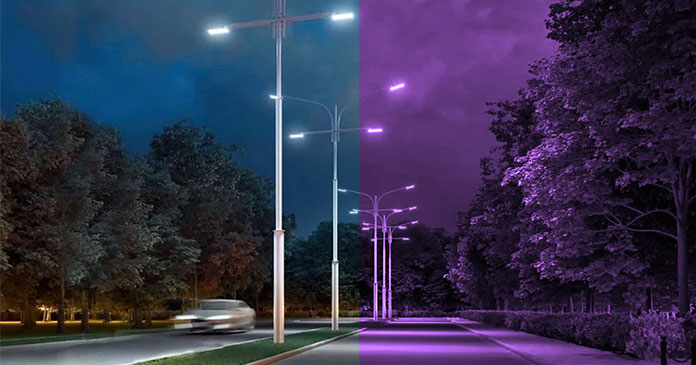The sky over the city of Vancouver was the color of a television tuned to a Prince concert.
OK, maybe not the whole sky. But enough of it that people noticed. A bunch of streetlights—a few hundred out of thousands—had suddenly changed. What had been moonshine white was now blue, or purple, or even violet. They weren’t any less bright, objectively speaking. But purple doesn’t exactly illuminate a sidewalk the way white does. The spectrum of Vancouver had taken a hard left turn. It didn’t look bad. It wasn’t unsafe, particularly. It was just weird.
So people placed worried calls to the city. And after all the hue and cry, Vancouver rolled out the utility trucks and set out to replace the chromatic aberrations—even though the lights were still pretty new. Like most other cities, Vancouver has spent the past few years switching from old sodium-vapor streetlights to LEDs. The new bulbs, basically arrays of computer chips that convert electricity to light, are cheaper, less power-hungry, and longer-lasting. LED streetlights are supposed to shine for the better part of a decade.
Unless they don’t. Because the Great Purpling didn’t start—or end—in Vancouver. Reports stretch back to 2020 and across the hemisphere—Wisconsin, North Carolina, Florida, New Mexico, California, even Ireland. “It’s something we began seeing about two years ago,” says Jeff Brooks, a representative for Duke Power, which is responsible for streetlights across the Carolinas and parts of Florida and the Midwest. “I’ve had people call and ask if this was because it’s Halloween, or because their football team in that area wears purple.”
It isn’t ghost- or football-related. And it isn’t some grand conspiracy, though lots of people saw in the synthetic twilight the effects of 5G radiation or government surveillance, a sign of the times. There’s nothing shady going on here. But still: Streetlights aren’t supposed to spontaneously change color.
So I did a little digging. The mystery of the purple lights appears to be both more mundane and more worrisome than anyone has realized—a mood-indigo check-engine light on the entire infrastructure of modernity. When LED streetlights start changing color for no apparent reason, it’s a visual cue that we might need to rethink, just a bit, how we build the future.
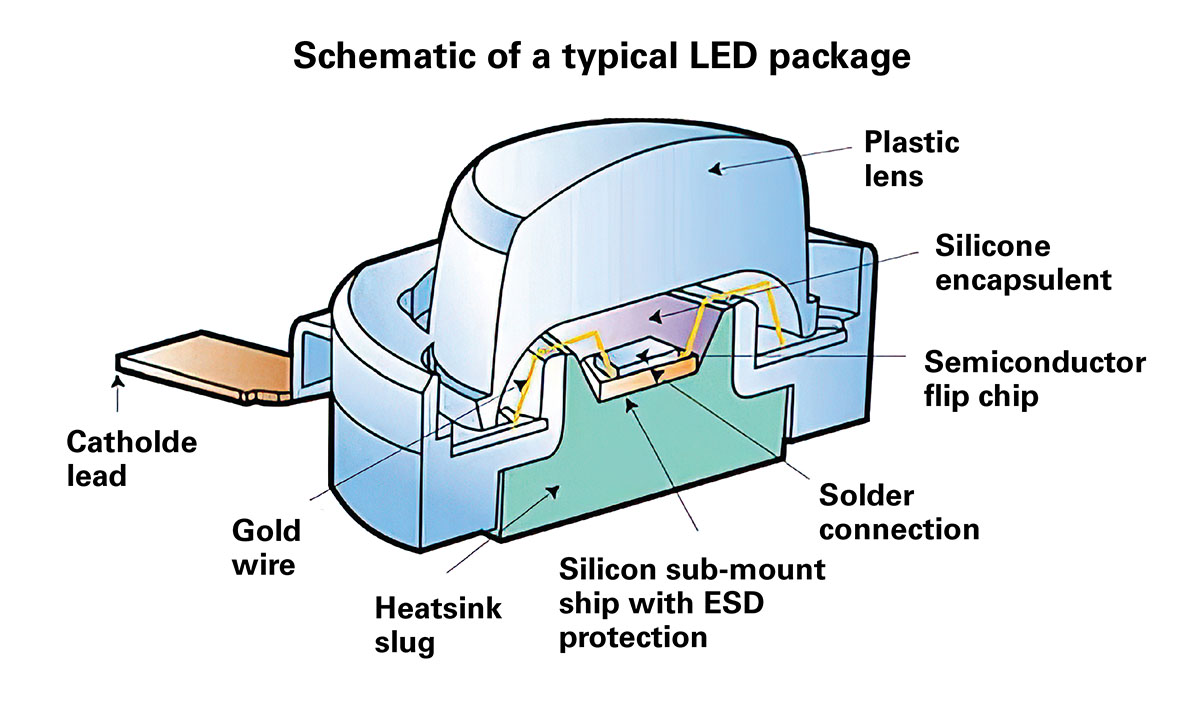
Might makes light
In some ways, you could represent the whole idea of modern human society with a light bulb turning on above our heads. Few technologies have been as critical to shaping the world as we know it. For 300 years of human history, from 1500 to 1800, the cost of lighting a light—any kind, from candle to whale oil to coal—stayed pretty much the same. But in about 1800, the price started to plummet dramatically.
Cities of the Industrial Revolution were first illuminated by gas lamps—their mantles, the part that contained the gas’ bright flame, were the first wide-scale use of the same rare-earth metals now so critical to batteries. A century or so later, electricity became dominant, both indoors and as lights for city streets. First it was arc lights, then incandescent bulbs, neon, fluorescent tubes, mercury vapor, sodium vapor. For the past few years, LEDs have been the hot new thing, in part because they don’t get hot. They turn electricity into light directly—no intermediate steps, just a straight electron-to-photon swap: Zap! Very economical and climate-friendly. Today they’re a $20-billion-a-year business.
By the late 2000s, cities around the world were swapping their legacy lights for the modern, higher-tech LEDs. They were, broadly, white lights. But anyone who’s ever painted a bathroom knows that not all whites are the same. For technical reasons derived from quantum theory and the quirky psychophysics of our eyes and brains, scientists measure the color of white light in kelvins, or “color temperature.” Higher numbers are bluer; lower are yellower and redder. Lots of cities settled on 4,000 K, the lunar glow of high-end sports-car headlights—and, not coincidentally, one of the easiest and therefore cheapest white LEDs to manufacture.
It was a startling switch from the more romantic, orange glow of sodium vapor. Less Paris by moonlight, more Porsche on the Autobahn. “The introduction of every new lighting technology caused a lot of consternation until people got used to it,” says Sandy Isenstadt, an art and architecture historian at the University of Delaware. “It’s often around color, sometimes simply around brightness. For that matter, even the introduction of gaslight caused a lot of concern.”
Still, most of us got used to the new bright white regime. And then it turned purple.
In the case of Duke Power, the color shift has affected only about 1 percent of the LED streetlights that the utility had installed. Still, that amounts to some 5,000 lights across the country. So what’s causing the Purple Reign?
It turns out the problem is upstream. Over the past decade or so, the LED light business has consolidated and a company called Acuity Brands now dominates the U.S. market. Every city with purple lights that responded to my queries or has public records on the matter bought its LED lights from Acuity. From 2017 to 2019, it seems, Acuity had a problem—right where technology and globalism overlap.
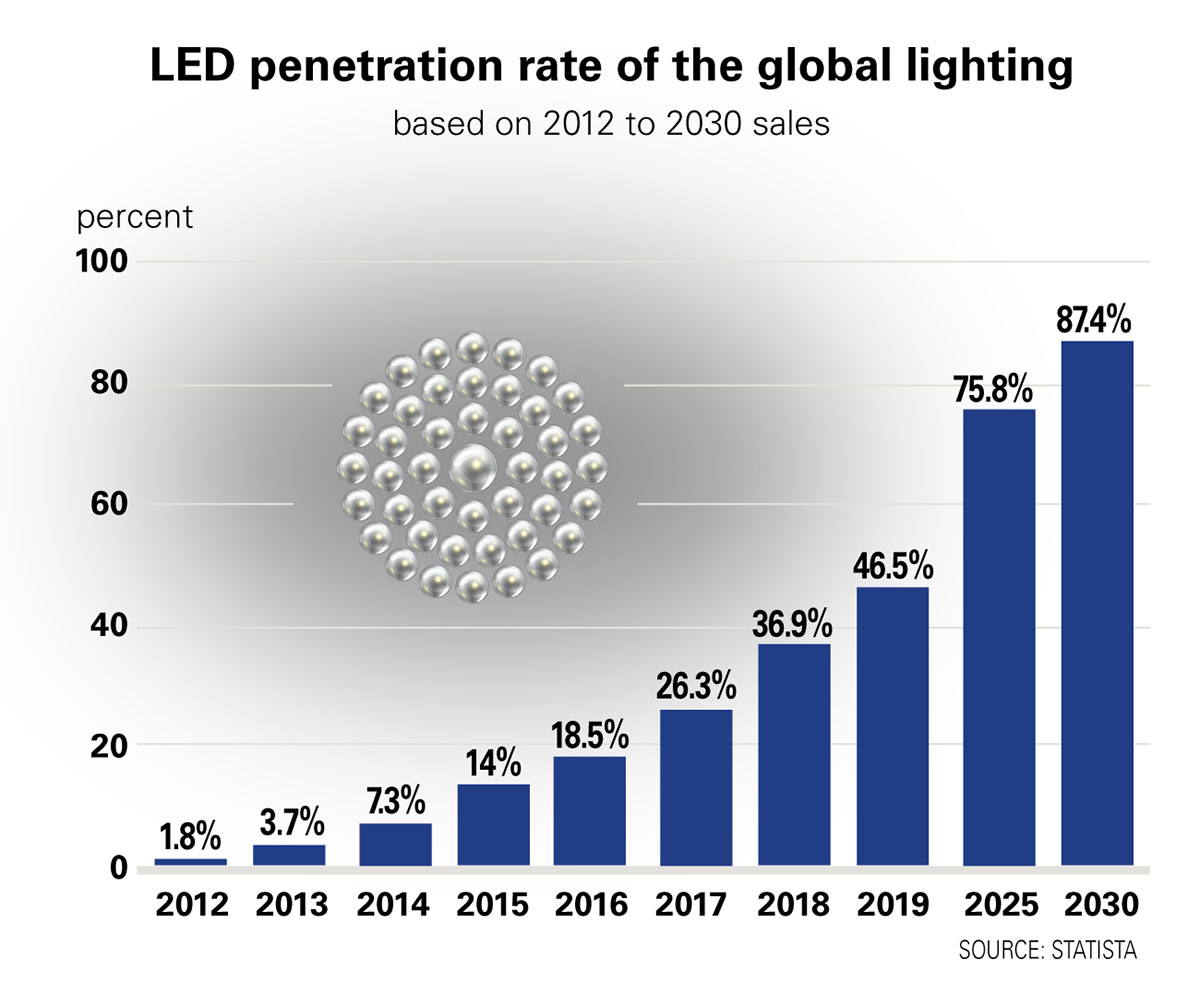
How to let there be light
As Isaac Newton figured out with a prism in 1665, whitish-yellow sunlight is made of a rainbow, the full visible spectrum. Where you draw the dividing lines on that spectrum—and which colors you bother to give a name—is highly subjective. But recombining all those wavelengths of light gives you white again.
You don’t have to use all the wavelengths, though. If you mix equal parts red, green, and blue light, our eyes will read it as white. Now, red and green LEDs have existed since the middle of the 20th century. But blue turned out to be a challenge big enough that the guy who figured it out, Shuji Nakamura, won a Nobel Prize in 2014. The blue LED, with its narrow wavelength, enabled all sorts of modern tech, from the Blu-ray disc to flat-screen monitors.
The big blue breakthrough also enabled engineers to create white LEDs that are both bright and cheap. That’s because they no longer actually needed the red and green ones to make white. A blue LED underneath a fancy ceramic-and-glass lens, impregnated with a yellow phosphor, would do the job. Our eyes see the blue-and-yellow mix as white. That was the big breakthrough—just wrap the blue LED chips in a complicated package of glass, sealant, solder, wires, and so on. Do it cheaply and reliably enough, and you’ve got yourself a global business.
A deeper look into that last part, though, can be illuminating. “There’s probably a couple hundred patents on LED package design,” says Michael Pecht, a mechanical engineer who serves as director of the Center for Advanced Life Cycle Engineering at the University of Maryland. “The chip is really pretty reliable. It’s the package that has all the problems.”
What kind of problems? Acuity and the purple cities haven’t been entirely transparent on that matter. Most of the wonky streetlights, it turns out, came from an Acuity sub-brand called American Electric Lighting. Neil Egan, an Acuity representative, said that “the referenced ‘blue light’ effect occurred in a small percentage of AEL fixtures with components that have not been sold for several years.” The company has been replacing every city’s lights under warranty. As to the cause of the purpling, he says it’s “phosphor displacement seen years after initial installation.” In other words, some kind of trouble in the fancy package surrounding the LED.
Representatives of the affected cities offer a little more detail. “The purple streetlights are a result of the phosphor coating delaminating from the LEDs,” says Fiona Hughes, a representative for the city of Vancouver. Brooks, of Duke Power, points to the same cause. “There’s a laminate on the fixture that gives it its white color,” he says. “As that laminate began to degrade, it caused the color tint to change toward purple.”
But what caused the delamination? The most likely culprit is heat damage. The phosphor layer in an LED package, as it happens, is really sensitive to temperature changes. Even the tiniest mistakes in assembly or installation can make LEDs more likely to heat up. That can cause the edges of the phosphor coating to curl, peeling away from the LED chip and allowing more of the native blue to leak through. It can also change the chemical structure of the phosphor itself, which in turn would change the color the LED emits.
You can avoid most manufacturing problems, of course, if you’re willing to pay for quality. Pecht—the electronics-reliability expert—worked with Philips years ago when it was a market leader in LEDs. “They did a lot of long-term testing at higher voltages, humidity, things like that, and I thought their devices could probably last 10 years,” Pecht says. “But their devices were probably the most expensive ones on the market. They can be very reliable, but you’ve got to get good-quality ones.”
Acuity’s LEDs aren’t the priciest ones out there. But that doesn’t mean the company itself caused the problem. According to Acuity’s 10-K filing, the company’s 19 factories in North America make a few precision components and do assembly. But Acuity outsources the actual LEDs from “third-party vendors” in Asia. Those vendors are typically building products at scale, trying to squeeze out every efficiency they can without infringing on the patents on the high-quality, higher-priced versions. Sometimes that makes for a less-good LED. (Acuity’s spokesperson declined to answer questions about the company’s LED vendors.)
“I find so often that companies don’t really know what they’re buying,” Pecht says. “They’re looking at price. It’s really a supply-chain-management problem.”
The unbearable being of lightness
That’s one reason the purpling could be a big deal. It shines a light on how deeply LEDs—especially the cheap white ones—have become interwoven into the global economy. Sure, Acuity has probably fixed the issue and is replacing all the lights. But what happens next time some company in south China solders something wrong and a wave of broken tech propagates across the planet? It’s streetlights this time; next time it could be phones, TVs, medical devices.
The nighttime illumination of a place literally defines its outlines. A new color casts everything in a whole new light.
Streetlights already are far more than just streetlights. During the second half of the 20th century, most cities installed lights just to light streets and highways as bright as possible for cars. LEDs gave them a new level of control. They could make streetlights bright enough for roadways, fine-tune subtler shadings for sidewalks, and create slick, computer-controlled packages that vividly illuminate building facades without making the inside of people’s apartments look like the Las Vegas strip.
That’s where the emotional and aesthetic elements come into play. In terms of look and feel, there’s no objective difference between, say, orange sodium-vapor lights and white LEDs, unless you care deeply about colorimetry. But when that orange glow is what defined your city and your childhood—as it did for Angelenos, like me, or Chicagoans—you don’t take any change lightly. Lights at night make a city into a whole new place, “a radiant and reflective construct, no longer beholden to the geometric structure and material resolution of the day,” as Isenstadt once wrote. The nighttime illumination of a place literally defines its outlines. A new color casts everything in a whole new light.
LEDs gave us a new choice of what color to use, and how to redefine our urban skies. Cities being cities, they based their decision—usually that 4,000 K, cold, bluish white—primarily on cost. That was a conscious, deliberate choice.
Now thanks to the vagaries of global trade, the nighttime color of many cities has changed by accident. People feel like something intimate, something definitional about their city, has been taken away. So they look for intention. Maybe it’s for a holiday? Maybe it’s a conspiracy? It has to mean something. Because if it doesn’t, that’s even scarier. Streetlights and street lighting are a city’s deep infrastructure. If they can break in such a weird and unexpected way, so can everything else.
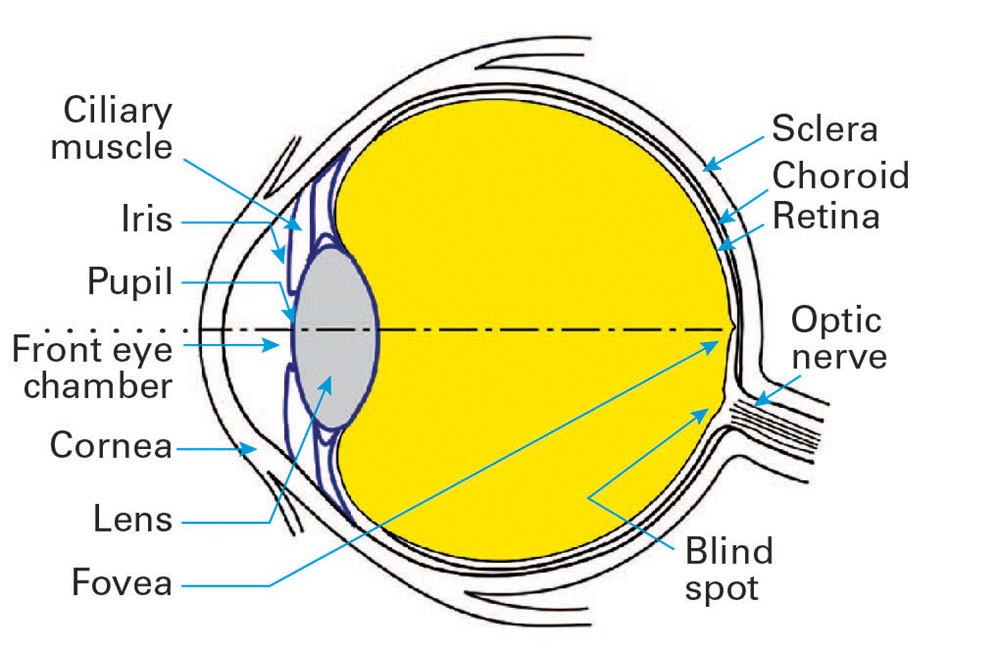
Fundamental structure of the human eye
While the retina contains several photoreceptors, the only image-forming receptors are rods and cones. Rods, which are most numerous in the retina, are more sensitive, function at lower light levels, and are not color sensitive. Cones are sensitive to color and are divided into red (64 percent), green (32 percent), and blue (2 percent) cones (Williamson & Cummins, 1983). The cones are concentrated in the center of the retina with the most being in the fovea, which contains only cones. Cones provide the sensitivity and high-acuity vision needed for daytime tasks.

Weber contrast is commonly used in cases where small features are present on a large uniform background, i.e., where the average luminance is approximately equal to the background luminance. It’s the standard used by the Department of Transportation (Dot).
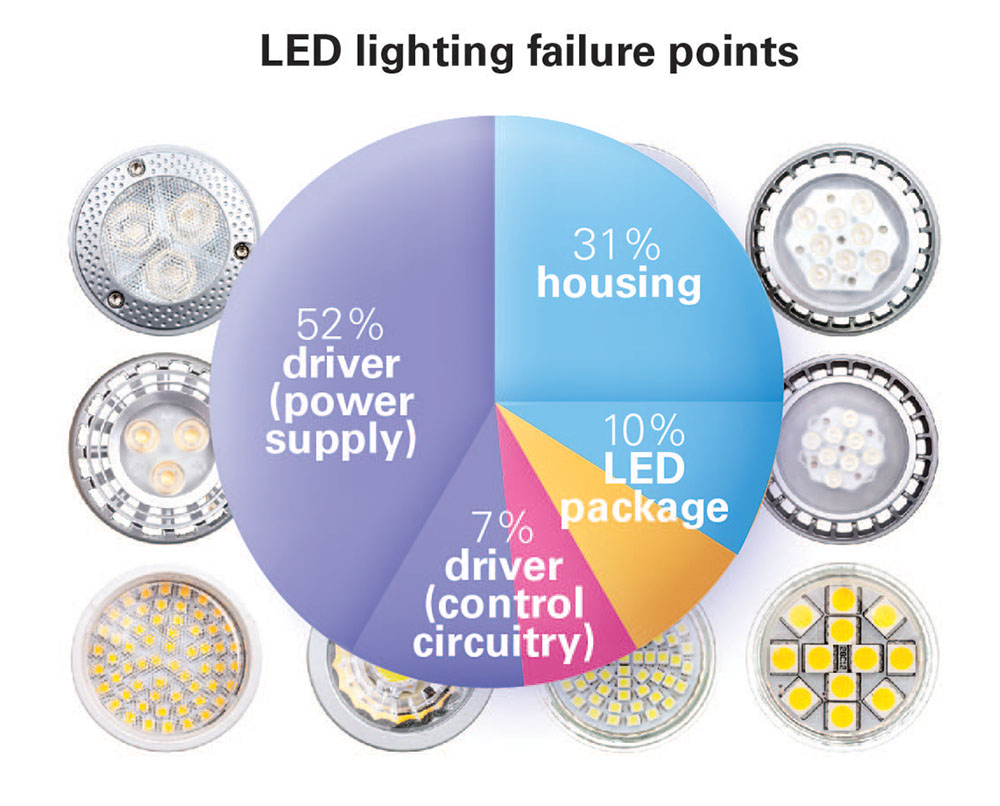
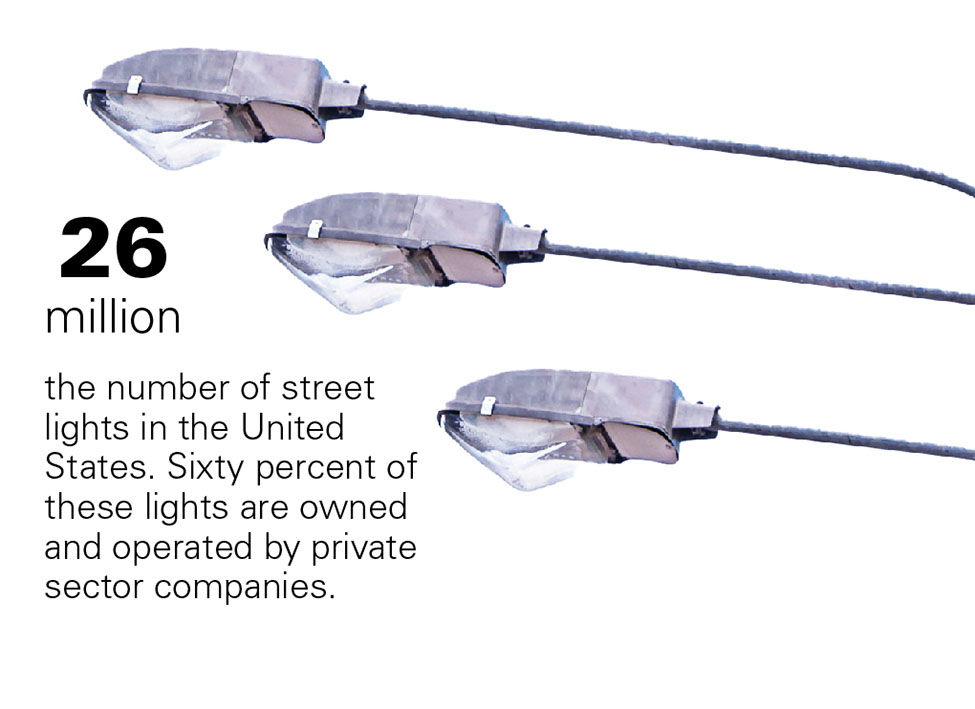
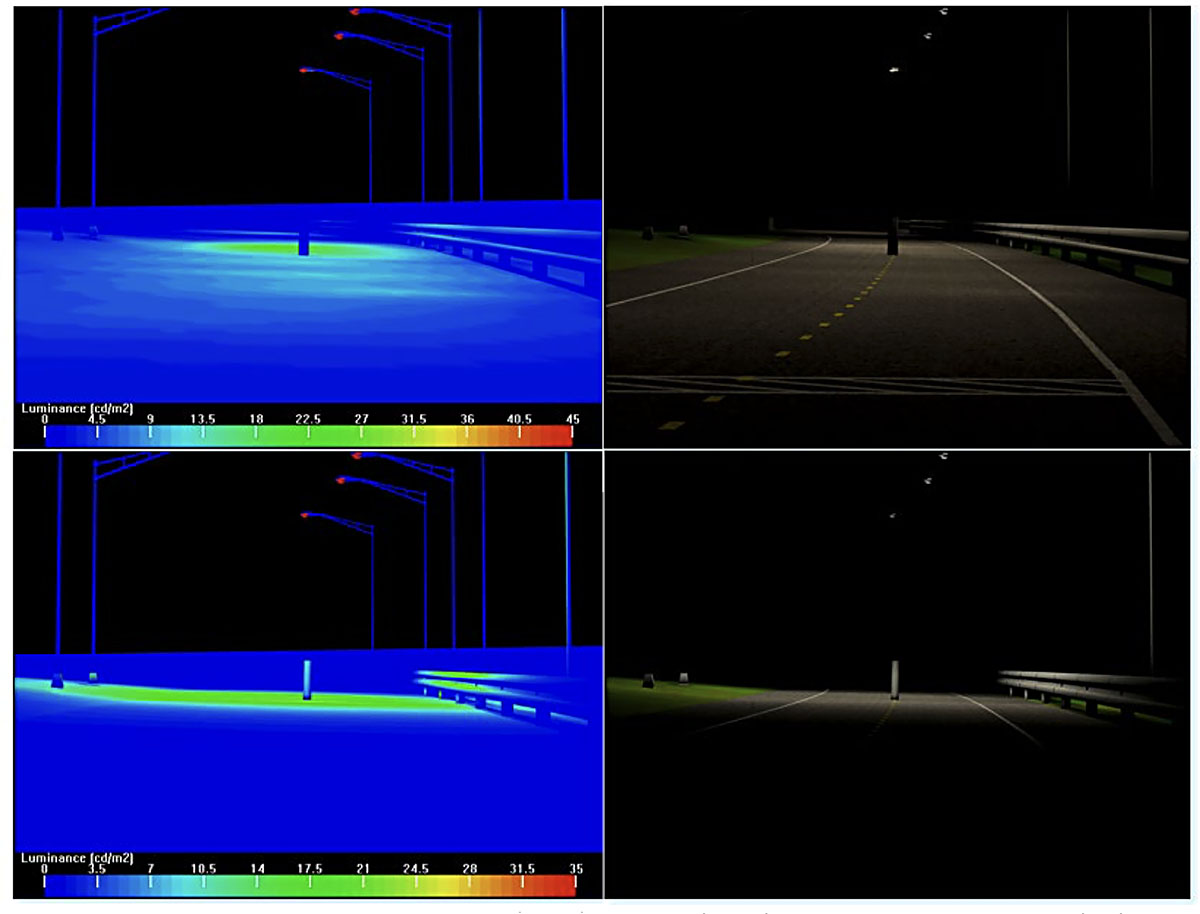
For luminance contrast, an object that is darker than its background will be seen by “negative” contrast, while an object that is sufficiently brighter than its background will be seen by “positive” contrast. the upright object shown in the upper frames is in negative contrast (a darker object silhouetted against a brighter background), and in the lower frames it is in positive contrast (brighter object against darker background).
It is also worth noting that contrast may vary within the object itself. The upper right frame shows the bottom portion of the object in negative contrast, and the upper portion in positive contrast. The value of contrast can also change along an object’s length.
Given the vast differences in LED product performance, it is worth properly evaluating the performance of lighting designs. Lighting calculation software and the power of computing systems have evolved, resulting in quick and easy lighting calculations that provide methods to optimize a lighting design (Source: Department of Transportation FHWA Lighting Handbook 2023, Transportation Assn. of Canada, 2006.)
Source Adam Rogers, Business Insider


